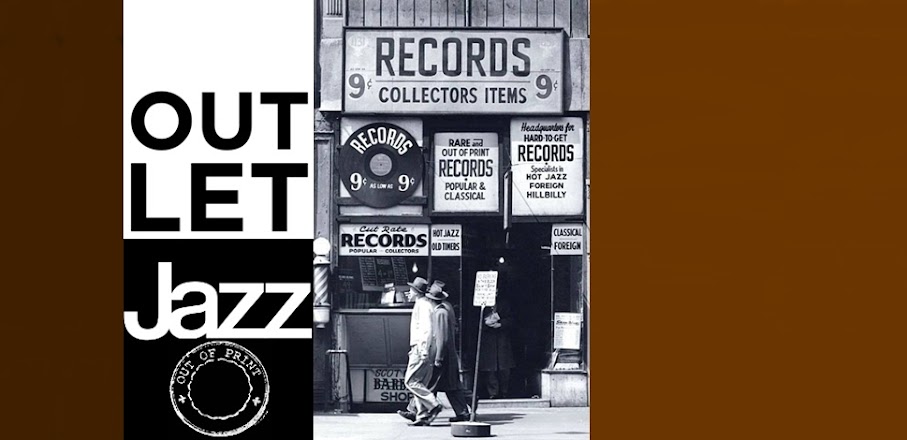A nice bop compilation featuring three different sessions as below:
Art Mardigan Sextet featuring John Williams on piano: a refreshing bop session with unique sound colour; Paul Gonsalves Sextet featuring Clark Terry: a bit corny, but also a nice mainstream session; and two tracks by Joe Gordon Quintet: Gordon's brilliant trumpet blows so great, and Art Blakey's propulsive rhythm gives the entire mood of this great hard-bop session.
Strictly personal rating (to what extent I could enjoy this album); 8 out of 10.
*Matsubayashi "Shaolin" Kohji [microgroove.jp]*
There are sixteen students in this class of the Jazz School; sixteen young men whose grades are impeccable, whose studies have clearly qualified them for a successful and distinguished career.
At the head of the class for the first four exercises is a member of the drums Corps, a familiar figure by the name of Arthur Mardigan.
Art is a native Detroiter, born in December, 1923 and a name band musician since the age of nineteen, when he joined Tommy Reynolds. After Army service in 1943-44 he spent a year with Georgie Auld's group, then went home to Detroit for a while before entering the New York scene, where he was a part of many noteworthy 52nd Street combos under the leadership of Charlie Parker, Dexter Gordon, Allen Eager and Kai Winding. In addition, Art worked off and on with Woody Herman and Elliot Lawrence. In 1954, when Pete Rugolo came east to form a band for a tour, Art was a cornerstone of that all-star ensemble.
Featured with Art on his four performances here are Don Joseph, a cornetist who's been a familiar figure around New York jazz circles for several years; Milt Gold, a trombonist who has seen service with such name bands as Stan Kenton's and Claude Thornhill's; and Al Cohn, the tenor saxophonist and arranger who has been rising rapidly to jazz eminence in the past year. Heard with Mardigan in the rhythm section are John Williams, the 25-year-old pianist from Windsor, Vermont, best known for his work with Stan Getz; and Teddy Kotick, a 27-year-old bass man who has been prominent on the New York scene with Charlie Parker, Buddy Rich, Buddy De Franco and a flock of other combos.
Class dismissed.
A new group moves in: at the head of this class is Paul Gonsalves, tenor saxophonist from Brockton, Massachusetts. Raised in Pawtucket, R.I., Paul started his musical life as a guitarist at the age of sixteen, in 1936; later, switching to tenor saxophone, he became popular as a featured member of the Sabby Lewis orchestra, a well known Boston group, with which he made his record debut.
A three-year hitch in the Army, from 1942 to '45, was followed by a stint in the Count Basie orchestra, and a brief fling in Dizzy Gillespie's final big band. Then, early in 1951, Paul joined the great Duke Ellington orchestra, of which, except for a few weeks in Tommy Dorsey's band in 1953, he has been a member ever since.
Paul's colleagues on this, his first record session under his own leadership, include Clark Terry, another great Ellingtonian of several years standing and sitting; Porter Kilbert, baritone saxophonist, who worked briefly on alto with Ellington in 1951; Junior Mance, a gifted 27-year-old pianist from Chicago, best known for the fine work he has done as Dinah Washington's accompanist; Eugene Miller on drums; and the inimitable, poll-winning bassist of erstwhile Woody Herman fame, Greig Stewart "Chubby" Jackson.
... dismissed...
Time now for graduation exercises. The class is headed by Joseph Henry Gordon, another brilliant New Englander on the modern jazz scene. Born in 1928 in Boston, Joe worked as a sandwich boy on the Boston-Albany railroad as recently as 1947, but later in that same year made his professional bow with his own combo at Boston's Savoy Ballroom, where the above-named Sabby Lewis was a frequent favorite. Joe also worked as a sideman with Sabby, as well as with a variety of other groups, from Georgie Auld to Charlie Mariano, from Charlie Parker to Lionel Hampton.
Heard with Joe on these sides are Charlie Rouse, a tenor man from Washington, D.C., who was with Duke Ellington in 1949-'50; Junior Mance, reappearing on piano; Jimmy Schenck on bass; and the pride of Pittsburgh, winner of the 1953 New Star award in the critics’ poll, Art Blakey on drums.
So these are the men you will meet in the Jazz School. It seems superfluous to point out that every last man of these sixteen students has graduated, as he deserves to, summa cum laude.
*(from the liner notes)*
Side 1
1 - I've Found A New Baby
(Plamer, Williams)
2 - Moroccan Blues
(Al Cohn)
3 - Old Gold
(Milt Green)
4 - Golden Touch
(Quincy Jones)
5 - Evening Lights
(Joe Gordon)
Side 2
6 - It Don't Mean A Thing
(Mills, Ellington)
7 - Take Nine
(Paul Gonsalves)
8 - Everything Happens To Me
(Adair, Dennis)
9 - Don't Blame Me
(Fields, McHugh)
10 - Body And Soul
(Heyman, Sour, Green, Eyton)
#1 to #4: Art Mardigan Sextet
Don Joseph (cornet), Milt Gold (trombone), Al Cohn (tenor sax), John Williams (piano), Teddy Kotick (bass), Art Mardigan (drums).
Recorded in New York City, May 20, 1954.
#6 to #9: Paul Gonsalves Sextet
Clark Terry (trumpet), Porter Kilbert (alto sax), Paul Gonsalves (tenor sax), Junior Mance (piano), Chubby Jackson (bass), Eugene Miller (drums).
Recorded (probably) in Chicago, Illinois, February 6, 1954.
#5 and #10: Joe Gordon Quintet
Joe Gordon (trumpet), Charlie Rouse (tenor sax), Junior Mance (piano), Jimmy Schenck (bass), Art Blakey (drums).
Recorded at Fine Sound Studio, New York City, September 3 (#10) and 8 (#5), 1954.



https://1fichier.com/?d0h2h8hjjxu2bm2xc1iq
ReplyDeleteJoder, espero que lo tuvieses programado porque sino voy a estar en deuda contigo, aún más, toda la vida. Mientras tanto voy a disfrutarlo. Muchas gracias
ReplyDeleteThank you!!!
ReplyDeleteFantastica la version de "Everything Happens To Me". Muchas gracias BLBS
ReplyDeleteMany thanks, blbs.
ReplyDelete